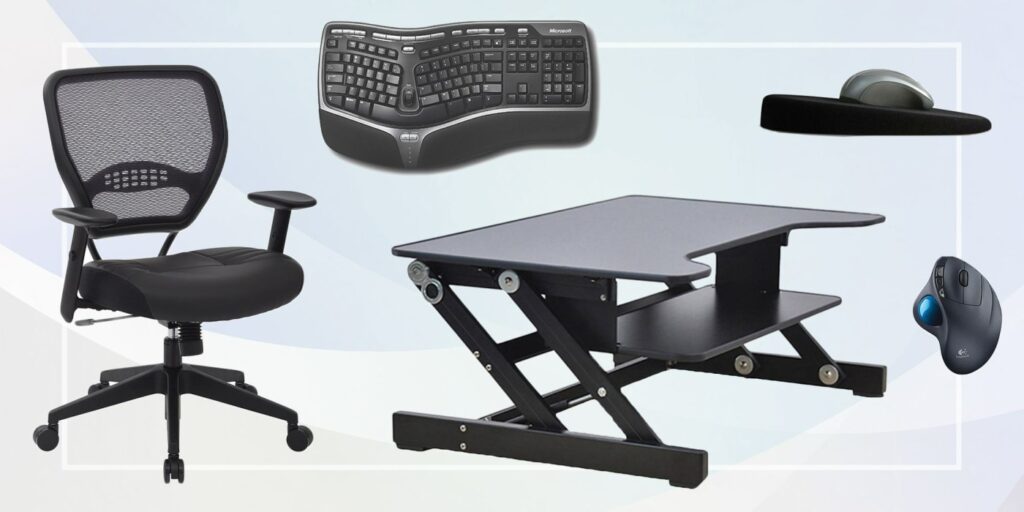Introduction
In today’s fast-paced world, we spend a significant portion of our day sitting—whether at work, at home, or in transit. With this sedentary lifestyle, investing in ergonomic furniture has become a necessity rather than a luxury. Ergonomic furniture is designed to support proper posture, reduce strain on the body, and enhance productivity. In this comprehensive guide, we will explore everything you need to know about ergonomic furniture, from its benefits to the best options available in the market.
Why Ergonomic Furniture Matters
Ergonomic furniture plays a crucial role in maintaining overall health and well-being. Here are some key reasons why it is essential:
- Prevents Health Issues: Poorly designed furniture can lead to back pain, neck strain, and other musculoskeletal disorders. Ergonomic furniture supports the body correctly, reducing the risk of such issues.
- Enhances Productivity: A comfortable and well-supported workspace allows for better focus and efficiency, leading to increased productivity.
- Reduces Fatigue: Sitting in an awkward position for long hours can cause fatigue. Ergonomic furniture is designed to provide optimal comfort, reducing strain and tiredness.
- Encourages Proper Posture: Ergonomic chairs and desks promote correct posture, preventing slouching and related discomfort.
- Boosts Workplace Morale: Employees who feel comfortable and supported are generally happier and more engaged in their work.
Key Features of Ergonomic Furniture
When shopping for ergonomic furniture, look for the following features:
1. Ergonomic Chairs
- Adjustable Height: Ensures that your feet rest flat on the ground, reducing leg strain.
- Lumbar Support: Supports the natural curve of the spine, preventing back pain.
- Adjustable Armrests: Allows you to position your arms comfortably, reducing shoulder tension.
- Swivel and Mobility: Ensures ease of movement, preventing stiffness.
- Breathable Material: Prevents overheating and provides comfort during extended use.
2. Ergonomic Desks
- Adjustable Height: Enables users to switch between sitting and standing positions.
- Spacious Surface: Allows enough space for monitors, keyboards, and other essentials.
- Cable Management: Keeps wires organized, reducing clutter.
- Sturdy Construction: Ensures stability and durability.
3. Ergonomic Accessories
- Keyboard Trays: Helps maintain a neutral wrist position, reducing the risk of carpal tunnel syndrome.
- Monitor Stands: Raises the screen to eye level, preventing neck strain.
- Footrests: Provides additional support and reduces leg fatigue.
- Anti-Fatigue Mats: Ideal for standing desks, reducing strain on the feet.
Top Ergonomic Furniture Brands
Here are some of the best brands known for their high-quality ergonomic furniture:
- Herman Miller: Famous for their Aeron and Embody chairs, designed for maximum comfort and support.
- Steelcase: Offers premium ergonomic chairs and desks with innovative features.
- Autonomous: Known for their affordable yet high-quality standing desks and chairs.
- Humanscale: Specializes in ergonomic accessories and office solutions.
- VariDesk: Provides excellent sit-stand desks and workstations.
Choosing the Right Ergonomic Furniture for Your Needs
Selecting the right ergonomic furniture depends on various factors, including your work habits, body type, and space availability. Here are some tips to help you make the best choice:
- Assess Your Needs: Determine whether you need a chair, desk, or additional accessories.
- Check Adjustability: Look for furniture with adjustable features to ensure maximum comfort.
- Consider Material and Build Quality: Invest in durable, high-quality materials for long-term use.
- Read Reviews: Check customer feedback to gauge the effectiveness of the product.
- Set a Budget: While ergonomic furniture can be an investment, there are options available for different budgets.
Setting Up an Ergonomic Workspace
Creating an ergonomic workspace involves more than just buying the right furniture. Here are some key steps:
- Position Your Monitor Correctly: Keep your screen at eye level to reduce neck strain.
- Maintain Proper Posture: Sit with your back straight, shoulders relaxed, and feet flat on the floor.
- Use an Ergonomic Chair: Adjust the height and lumbar support to suit your comfort.
- Arrange Your Desk for Efficiency: Keep frequently used items within reach.
- Take Regular Breaks: Stand up, stretch, and move around every hour to prevent stiffness.
The Future of Ergonomic Furniture
As technology evolves, so does ergonomic furniture. Some trends shaping the future include:
- Smart Desks and Chairs: Furniture integrated with sensors to track posture and suggest adjustments.
- AI-Powered Workstations: Adaptive furniture that adjusts automatically based on user preferences.
- Sustainable Materials: Eco-friendly designs that promote sustainability without compromising comfort.
- Increased Customization: Personalized ergonomic solutions tailored to individual needs.
Conclusion
Investing in ergonomic furniture is an investment in your health, comfort, and productivity. Whether you’re setting up a home office or upgrading your workplace, choosing the right ergonomic furniture can make a significant difference. By understanding the key features, top brands, and setup tips, you can create a workspace that promotes well-being and efficiency.
If you’re looking for the best ergonomic furniture, explore our collection and transform your workspace today!



